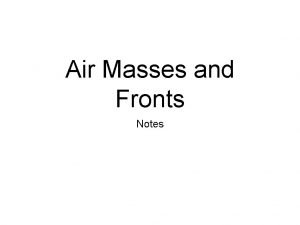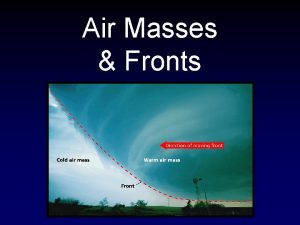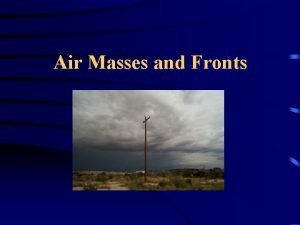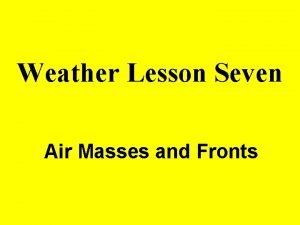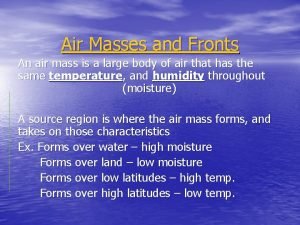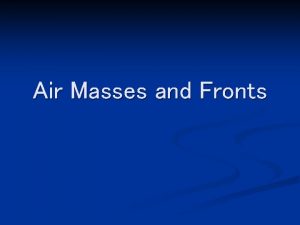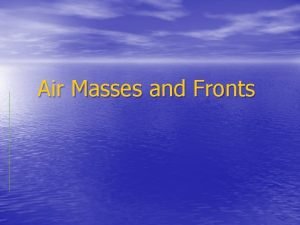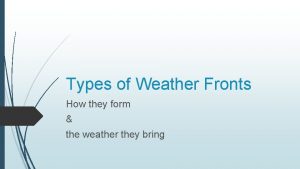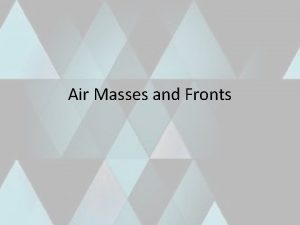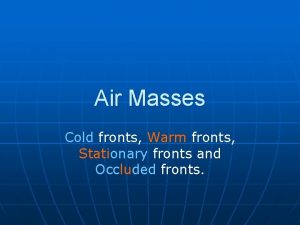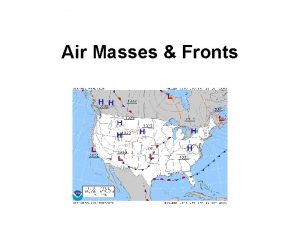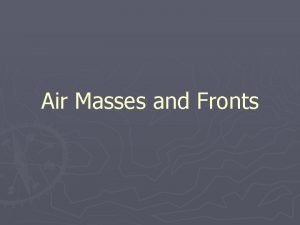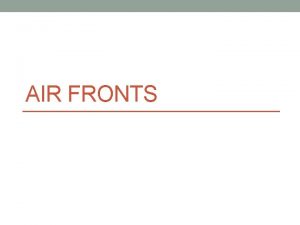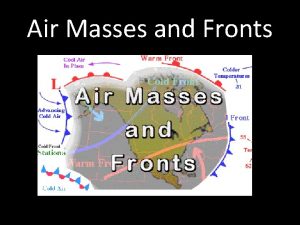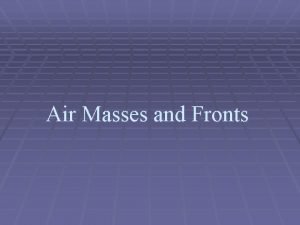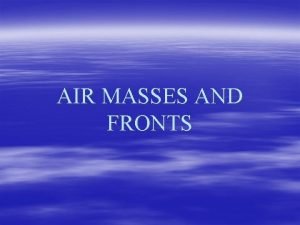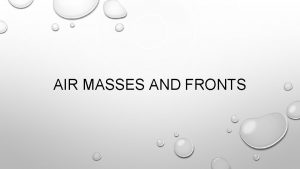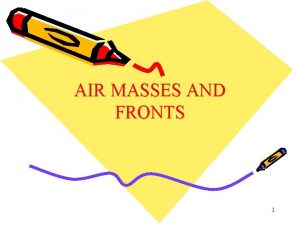Air Masses and Fronts An air mass is














- Slides: 14

Air Masses and Fronts An air mass is a large body of air that has the same temperature, and humidity throughout (moisture) A source region is where the air mass forms, and takes on those characteristics Ex. Forms over water – high moisture Forms over land – low moisture Forms over low latitudes – high temp. Forms over high latitudes – low temp.

• Air mass that form over land are called continental = (c) • Air masses that form over water are called maritime = (m)

• Air masses that form at high latitudes (cold) are called – polar (P) • Air masses that form at low latitudes (warm) are called – tropical (T) • Air masses are identified by two letters, first describes the moisture, the second describes the temperature. Ex. m. T


Fronts • A front is a boundary where two air masses meet • A cold front forms when cold air moves into an area occupied by a warmer air mass

• Characteristics of a cold front: – Moves rapidly – Stays close to the ground – more dense – Associated with dark clouds – Precipitation is brief, but heavy – Associated with severe weather, thunderstorms, hail, and tornadoes

• A warm front forms when warm air moves into an area occupied by a colder air mass • Characteristics of a warm front are: – Slow moving – high thin cirrus clouds form in front of the warm front - Precipitation is long, but light - Less dense air moves up and over cold more dense air mass


• Stationary fronts form where cold and warm air masses meet, and both air masses have equal force, • Cold front has same strength as warm front • Many days of precipitation


• Occluded fronts form where a warm air mass is caught between two cooler air masses. • Two cooler air masses move the warm air mass up, cooling of the air mass occurs and cloud formation with precipitation will happen



 What are middle-latitude cyclones?
What are middle-latitude cyclones? Air masses notes
Air masses notes North american air masses
North american air masses Two cold air masses converge on a warm air mass
Two cold air masses converge on a warm air mass Whats an air mass
Whats an air mass Air masses & frontswhat is an air mass?
Air masses & frontswhat is an air mass? Maritime tropical air mass symbol
Maritime tropical air mass symbol Air masses & frontswhat is an air mass?
Air masses & frontswhat is an air mass? Air masses & frontswhat is an air mass?
Air masses & frontswhat is an air mass? Stationary front
Stationary front Air mass source regions
Air mass source regions Cold air mass overtakes warm air mass
Cold air mass overtakes warm air mass Air mass vocabulary
Air mass vocabulary How do weather fronts form
How do weather fronts form Air fronts
Air fronts

